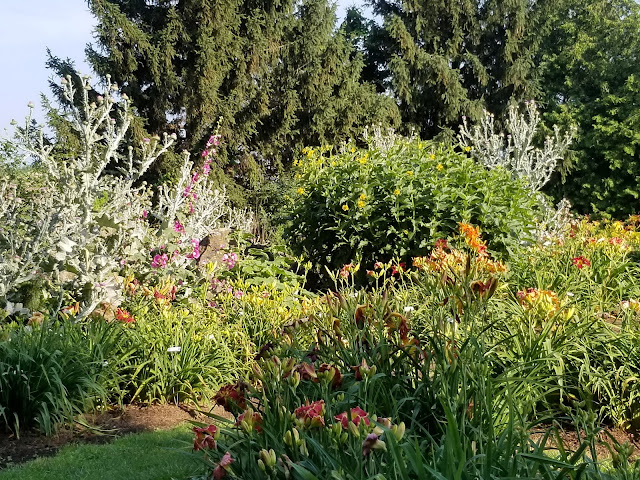A is for Aristolochia fimbriata (White Veined Hardy Dutchman Pipe)
Here is my Hardy Dutchman Pipe last summer. As it turned out, mine wasn't as hardy as I hoped and it didn't come back this year, but it did produce a number of seedlings, so I'm calling it a win.
While this butterfly attracting plant grows well here in Texas, it is actually from Brazil, Paraguay, Bolivia, Uruguay, and Argentina. It is a small ground cover, only standing 6" tall and 2-3 ft wide. I have seen it described as both evergreen and deciduous. So from what I can gather, depending on your location and the weather, it maybe one or the other.
Like other Dutchman pipe vines, Aristolochia fimbriata has heart shaped leaves. These leaves also have some additional silvery white markings on them, adding to the plants overall ornamental appeal.
It's a small plant, and consequently it's flowers are small too. You need to get down on the ground to get a good look at them. I would describe them as maroon and yellow, with a fringed edge and sort of pipe shape. In my opinion they are rather pretty and definitely interesting. They kind of remind me (in shape) of the trap on a Nepenthes plant.
Aristolochia fimbriata can produce seed pods that you can see below. They aren't as interesting as the flowers, but do tend to spread via these seeds. During our trip to Oklahoma City a two summers ago, we saw it almost used as a ground cover due to it's self sowing. I have also seen some of this in my garden. I have quite a few seedlings right where the old plant was. They started off so small I was scared to transplant them around. Assuming they make it threw the winter, I'm be transplanting a few along the edge of the Pollinator Garden next spring.
The big question that always comes up with any Aristolochia, is what species are toxic to pipevie swallowtail larva. Many people have heard different things about toxicity and non-native plants. My research found that the giant Dutchman's pipe (Aristolochia gigantea) can be toxic to the catapilars. It is native to an area where the swallowtail butterflies are not present, so it is not a threat in it's native range. When you plant it other places, it gives cues to the female butterflies to lay their eggs on it. Unfortunately, the chemicals in the plant are too strong for the caterpillars and after feeding for a few days, they will die.
This is not true of Aristolochia fimbriata, so you can feel confident in planting it in your garden with butterflies. It is a host plant for both the Gold Rim Swallowtail and Pipevine Swallowtail Butterflies. The caterpillars can mow this plant to the ground multiple times during a season. While this might be true in some places, I haven't seem any caterpillars on this plant in my garden...yet (or at least I hope). There is always next year.






That low growing Dutchman's pipe is fascinating. I love learning about different plant varieties that occur in different climates. As a New Englander I only know about Dutchman's pipe big climbing vines - or am I mixing plants up?
ReplyDeleteNope there are large climbing vine types of Dutchman's pipe. We had one at the old house and the flowers were so cool!
DeleteI love the patterns on the foliage and the flowers are really cool.
ReplyDeleteThis is the first year we've had pipevines in the garden so it has been so fun! Unfortunately I have one of the toxic ones in addition to this one so I'm having to keep an eye out for caterpillars and move them if I can. I hope to get a ground cover type thing going with mine in another area of the garden next season. It dies back every year but resprouts from the roots in 9a.
ReplyDeleteIt can re-sprout here too, but I wasn't so lucky this year. My tropical milkweeds died completely too (same garden bed) and only came back from seed. But boy did they ever come back. I have milkweed everywhere...I LOVE it.
DeleteWhat an interesting plant, Rebecca. I like the flowers even though they look like an exotic insect to me. As a tropical plant I'm guessing they want regular water to thrive?
ReplyDeleteOurs gets regular water. Everything I've ready say "moist well drained soil". I think you would need to give it supplemental water.
DeleteI have two that I grew from seed . I keep mine in pots in the green house. I was trying to recreate it's native Brazil instead of the PNW. Mine bloomed on my birthday in August !
ReplyDeleteThis year mine were too small to bloom, so no new seed this year. Hopefully they will make it threw the winter.
DeleteThat's a beauty! Much prettier than my plain Dutchman's Pipe.
ReplyDelete